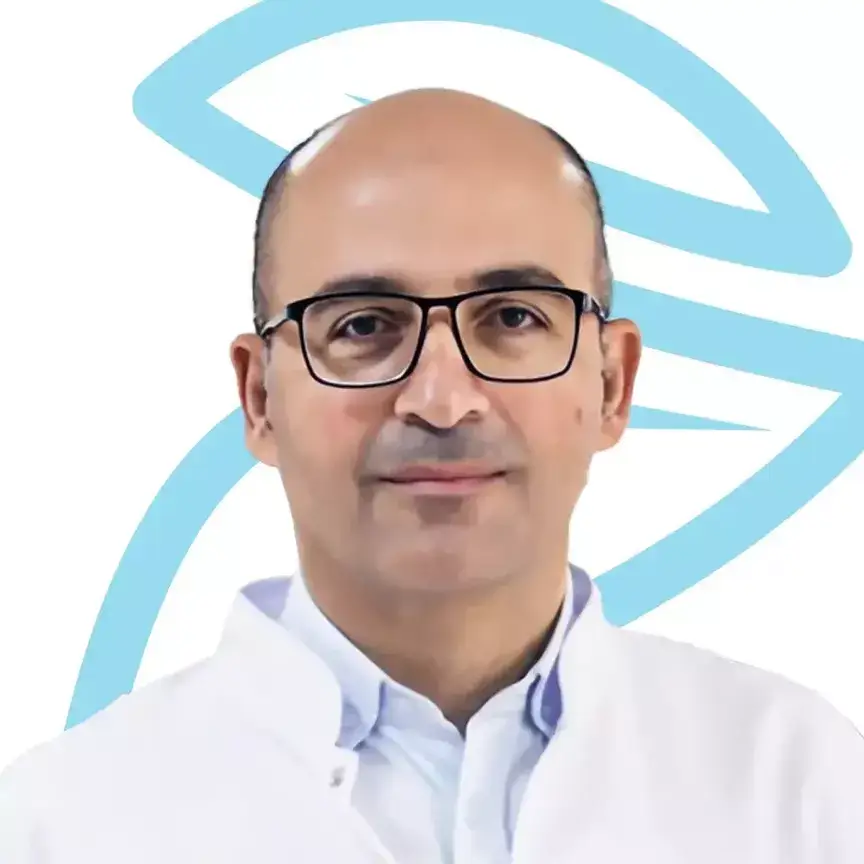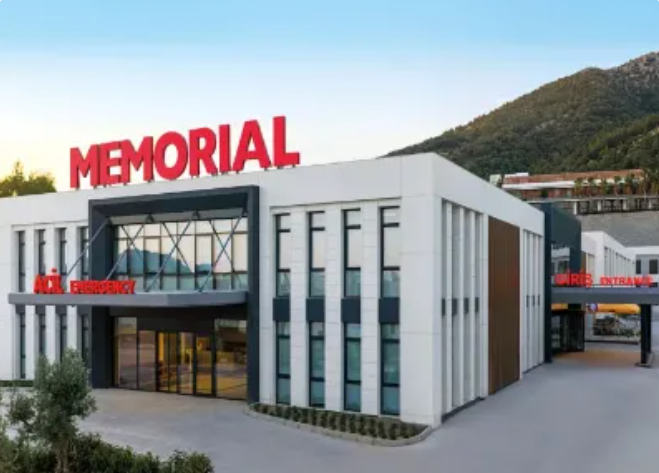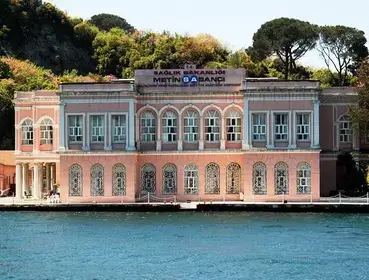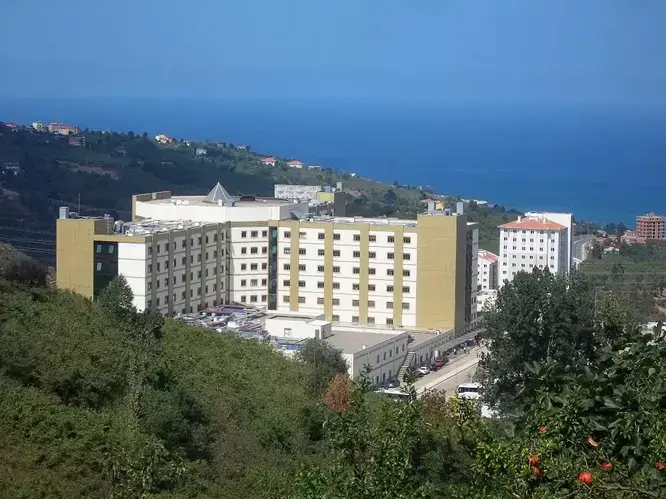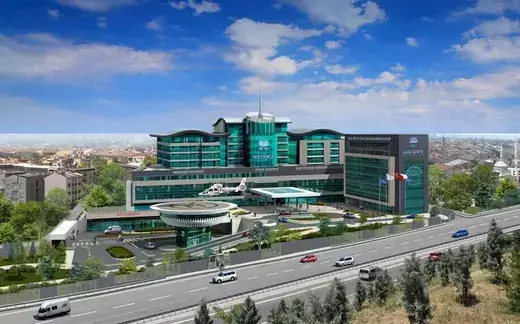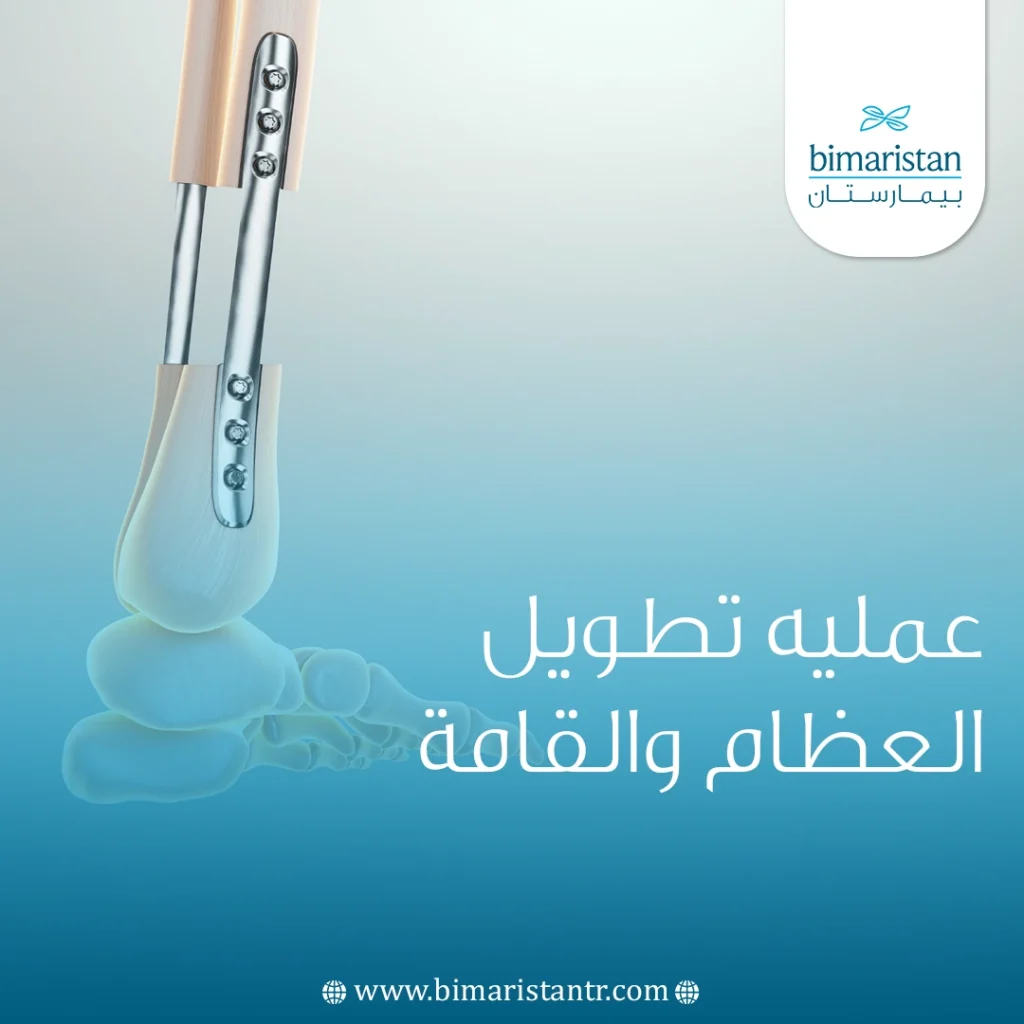في السنوات الأخيرة، تطورت الإجراءات الطبية بشكل كبير وخاصةً في تركيا، ومن هذه الإجراءات تبرز عملية تطويل العظام، التي جاءت كحل لعديد من الأشخاص الذين يعانون من قصر القامة، أو اختلاف الطول بين الساقين.
حيث تتضمن عملية تطويل العظام استخدام تقنيات حديثة مثل المثبتات الخارجية أو الأجهزة الداخلية لتطبيق قوى شد على العظام، مما يؤدي إلى نموها بشكل تدريجي، يتميز هذا الإجراء بقدرته على تحسين جودة الحياة وزيادة الثقة بالنفس للأفراد الذين يخضعون له، إلا أنه يتطلب التزاماً طويل الأمد من حيث الرعاية والمتابعة الطبية.
ما هي جراحة تطويل القامة؟
هي عمل جراحي يتم فيه زيادة طول عظام الساقين أو الذراعين، وتحدث هذه الزيادة بشكل تدريجي وعلى فترة طويلة من الزمن لكي تحظى العظام والأنسجة الرخوة (كالجلد، العضلات والأعصاب) بعد العملية بالزمن الكافي لتنمو طولاً، وتحتاج عملية تطويل القامة عدة أشهر كي تظهر نتيجة ملحوظة، ومن الممكن مشاركة هذه العملية مع إجراء آخر كتصحيح التشوه العظمي التدريجي أو الفوري.
قد تتم إطالة عظم الفخذ، أو الظنبوب، أو العضد ومن الممكن تطويل بعض أصابع القدم كي تصبح متناسقة مع بعضها البعض مما يضفي ناحية جمالية على القدم أو لعلاج تشوه ما، ومن الخاطئ اعتقاد أن عملية تطويل القامة ستؤدي لزيادة في الطول على حساب الجذع (أي صدر أو بطن المريض) فهذا الأمر يحتاج لتغيير طول العمود الفقري وما يترتب عليه من نتائج سلبية عديدة ولا يتم اللجوء إليه عملياً.
ماذا يحدث قبل عملية تطويل العظام والقامة؟
قبل ترشيح المريض لعملية تطويل العظام ينبغي أن يقوم طبيب الجراحة العظمية بعمل تقييم شامل لحالة المريض فمن الممكن أن يكون التناقض في طول الأطراف عائد لمشكلة طبية مختلفة تماماً لا يعلمها المريض كالجنف او تشوه في عظم الورك ومن الممكن أن يكون لدى المريض تصور خاطئ عن الاختلاف في طول أطرافه.
في الواقع يجب أيضاً أن يكون المريض مدركاً تماماً لطبيعة العمل الجراحي ويكون متحفز له بحيث أن فترة التعافي من عملية تطويل العظام طويلة نوعاً ما ويحتاج المريض لعلاج فيزيائي مستمر لفترة أشهر ومن الممكن أن يظل لفترة على عكازات لذلك يجب التأكد أن المريض متحفز ومستعد لخوض هذه العملية.
في بعض الحالات عند الأطفال الذين لديهم قصر عظم بالنسبة للعظم المجاور يمكن أن تجرى إعادة للعملية بعد فترة لأنه اثناء نمو الطفل يمكن أن يزداد التناقض في طول الطرفين حيث أن تناقض مقداره 2 سم يمكن أن يزداد لتناقض مقداره 3 سم أثناء نمو الطفل بسبب وجود مشكلة في لويحات النمو (growth plate) في إحدى الطرفين.
كيف تتم زيادة الطول عن طريق الجراحة؟
تقوم زيادة الطول على عدة مبادئ حيوية بسيطة تعتمد في جوهرها على الشد و التوتير (tension stress)، يؤدي الشد التدريجي للأنسجة الحية باستعمال المسامير و المثبتات وغيرها من التقنيات الجراحية إلى خلق حالة من عدم الاستقرار الذي يؤدي إلى تحفيز النمو بشكل فعال والمحافظة على نشاط الخلايا المسؤولة عنه لفترات طويلة، ومع توفر التروية الكافية سيؤدي هذا الشد المتزايد مع الوقت إلى تنشيط عمليات حيوية و تفاعلات تجديدية تنتهي بزيادة الطول وفق اتجاه الشد، حيث تتضمن زيادة الطول العظمي بعد عملية تطويل العظام أربع مراحل:
- رحلة الكمون أو الخفاء (latency phase): و هي الفترة الممتدة بين فصل العظام وحتى الوصول لمرحلة الافتراق، يحدث فيها التهاب و تشكيل للدشبذ (ما يشبه الغراء الطري بين العظم) وتستمر حتى ثلاثة أسابيع.
- مرحلة الافتراق (distraction phase): يتم فيها شد طرفي العظم و تبعيدهما عن بعضهما البعض وهنا تحدث الزيادة في الطول التي تقدر ب1 مم في اليوم و تستمر ثلاثة أسابيع أيضاً.
- مرحلة التصلب و التماسك (consolidation phase): تتم إزالة الشد وإعطاء العظام الجديدة بعض الوقت كي تتصلب وتتمعدن، و تستمر ثلاث شهور.
- مرحلة إعادة النمذجة (remodeling phase): و هي المرحلة الأخيرة التي تصبح فيها العظام المتشكلة قاسية كالعظام الطبيعية.

لمن تجرى جراحة تطويل القامة؟
انتقلت الحاجة لإطالة العظام خلال المئة عام الماضية من كونها علاجاً للتشوهات العظمية الناتجة عن أمراض عديدة كشلل الأطفال وإصابات الحروب والكسور الملتحمة بشكل خاطئ إلى علاج حالات ثانية أصبحت شائعة مثل قصر العظام ومشاكل المفاصل المكتسبة وليس الخلقية كالأذيات والالتهابات و انقطاع التروية عن العظام والمفاصل.
ركزت العديد من الدراسات في الماضي على الجانب العلاجي في عملية تطويل القامة، إلا أنّ تحسن الصحة العامة وتناقص انتشار الأمراض المؤدية لتشوهات العظام وتحول غالبية الأعمال إلى النظام المكتبي المريح بعيداً عن الإصابات والأذيات قد دعى للتفكير بالجراحة كحل لقصر القامة دون وجود حالة مرضية تدعو إلى ذلك، ومن الشائع في وقتنا الحالي أن يخضع الأفراد الذين يعانون من حالة تدعى تباين طول الساقين (leg length discrepancy) لعملية تطويل العظام وغالباً ما تُجرى في الطرفين معاً، ويجب أن يكون الشخص المرشح للخضوع لعملية تطويل العظام:
- يتمتع بالاستقرار النفسي ويحظى بدعم جيد من أسرته
- بالغاً مكتمل نموه يتمتع بصحة جيدة ويُفضل أن يكون غير مدخن
- أن يملك فكرة عن تكلفة العملية وما يترتب عليها من التزامات بتعليمات أخصائي الجراحة بعد القيام بها
- على دراية تامة بما قد تحمله الجراحة من خطورة و اضرار على الرغم من ندرتها في المراكز المتخصصة
- لا يوجد طول محدد تماماً يجب أن يجري المريض فيه عملية تطويل القامة إذ يعتمد إجراؤه على رغبة المريض بشكل رئيسي
أنواع عمليات تطويل العظام والقامة
يوجد عدة تقنيات يتم من خلالها إجراء جراحة تطويل القامة منها ما يتم عبر استخدام أجهزة خارجية تحيط بجلد الشخص ومنها ما يعتمد على استخدام مسامير داخلية توضع داخل العظم.
تقنية ايليزاروف
تقوم تقنية ايليزاروف على جهاز تثبيت خارجي دائري الشكل يتم تثبيته حول العظم بواسطة أسلاك معدنية، يمكن عبر هذه التقنية اجراء عمليات تطويل العظام وعلاج الكسور والتشوهات أيضاً، حيث يتم تطبيق الجهاز على عظم الفخذ او الساق ويستطيع المريض المشي من اليوم التالي للجراحة باستخدام العكازات وتعد عملية ذات تكلفة قليلة نسبياً، لكن من سلبياتها وجود خطر لحدوث إنتان مكان وضع الجهاز ويمكن ـن تكون هذه التقنية غير مريحة للمريض بسبب كبر حجم الجهاز وقد يترك آثار مكان الاسلاك المتصلة بالجلد للتطويل.
تقنية هوليفكس
عبارة عن جهاز خارجي أحادي الجانب يرتبط بالعظام بواسطة براغي تثبيت ويتميز هذا الجهاز بخفة وزنه لأنه مصنوع من مادة التيتانيوم بالتالي هو أخف وزناً من جهاز ايليزاروف، ويتميز عن تقنية ايليزاروف بأن احتمال انتقال الانتان أقل ومريح بشكل أكبر للمريض واحتمال ترك آثار على الجلد أقل، لكن من سلبياته طول فترة وضع الجهاز حيث لا يُزال الجهاز إلا بعد انتهاء مرحلة التكثف وتمعدن العظم.

تقنية لون
تعتبر هذه التقنية مزيج من جهاز خارجي يشبه جهاز هوليفكس المسؤول عن التطويل ومسمار داخلي مسؤول عن التثبيت يوضع داخل العظم جراحياً، وتعد من التقنيات الموثوقة شائعة الاستخدام، تتميز بإمكانية إزالة الجهاز الخارجي بشكل مبكر بعد انتهاء مرحلة التطويل عكس تقنية هوليفكس وايليزاروف التي يزال فيها الجهاز بعد مرحلة التكثف، لكن تعد تكلفتها مرتفعة نسبياً.
تقنية برسايس 2
تعتمد هذه التقنية على مسمار داخلي فقط دون الحاجة لجهاز خارجي، حيث يصنع المسمار من التيتانيوم ويتم زرعه داخل العظم جراحياً ويجري التحكم به عن طريق جهاز كهرومغناطيسي، ومن ميزات هذه التقنية عدم وجود جهاز خارجي يزعج المريض ويمكن أن يبقى المسمار داخل العظم أي لا داعي لإزالة المسمار بعد انتهاء التطويل والتكثيف حيث تم هندسة المسمار ليتناسب مع العظم ولا يتعارض وجود المسمار مع الرنين المغناطيسي MRI، ومن سلبيات هذه الطريقة أن المريض يحتاج المريض لكرسي متحرك خلال مرحلة التطويل لعدم قدرة المسمار على تحمل وزن الجسم.
تقنية سترايد
تقنية متقدمة في علم جراحة العظام وهي نسخة مطورة من برسايس 2 تعتمد أيضاً على مسمار داخلي فقط دون الحاجة لجهاز خارجي، ويكون المسمار هنا مصنوع من الفولاذ المقوى وبالتالي لا يضطر المريض لاستعمال الكرسي المتحرك، أي إن المسمار يستطيع حمل وزن الجسم، لكن تكلفتها مرتفعة للغاية.

التعافي بعد عملية تطويل العظام
في الحقيقة تختلف فترة التعافي من مريض لآخر بعد عملية تطويل العظام حيث أنّ فترة التكثف قد تستغرق وقت طويل لكي يأخذ العظم الجديد شكله وصلابته، وكقاعدة عامة يحتاج الطفل نصف فترة التعافي التي يحتاجها البالغ حيث أن الاطفال لديهم قدرة على تجديد العظام بشكل أفضل من قدرة البالغين، وتعتمد أيضاً مدة التعافي على الطول المراد إضافته للعظم فكلما ازداد الطول المراد إضافته ازداد الوقت اللازم للتعافي.
ويلعب العلاج الفيزيائي دور هام جداً في تسريع التعافي حيث يساعد العلاج الفيزيائي العضلات على التمدد ويساعد في الحفاظ على مرونة المفاصل، ويُنصح المرضى الذين خضعوا لهذه العملية بأخذ مكملات غذائية تحوي على الكالسيوم فهم بحاجة لتسريع عملية الالتئام وتصلب وبناء العظم الجديد، ويُمنع المريض من التدخين في فترة التعافي لأن التدخين يبطئ آلية التكثف واكتساب العظام الجديدة الملتئمة الصلابة الكافية.
مخاطر ومضاعفات عملية تطويل العظام
لا يخلو أي عمل جراحي من بعض المضاعفات والمخاطر ومن مضاعفات عملية تطويل القامة:
- العدوى: تعد العدوى من أكثر المضاعفات شيوعاً، ويمكن علاجها بالمضادات الحيوية.
- الألم: قد يعاني المريض من ألم في موقع العملية، لكن يمكن التحكم فيه بالأدوية.
- تصلب المفاصل: قد يفقد المريض بعض نطاق حركته في المفاصل، لكن يمكن تحسين ذلك من خلال العلاج الطبيعي.
- الكسر: في حالات نادرة، قد تحدث كسور في العظام.
- المضاعفات العصبية: قد تؤثر العملية على الأعصاب، مما قد يؤدي إلى الضعف أو الخدر أو الوخز.
- التندب: ستبقى ندوب دائمة في موقع العملية.
ويمكن عبر التخطيط الجيد والتعاون بين الطبيب والمريض تجنب الاختلاطات ما أمكن ولا ننسى دور المريض في مرحلة التعافي والتي تشمل العلاج الفيزيائي.
نتائج عملية تطويل العظام
غالباً تبلغ درجة تطويل العظم الواحد وبالتحديد عظمة الفخذ حوالي 5 إلى 8 سنتيمتر وإنً تطويل العظم أكثر من ذلك قد يترافق مع نسبة أعلى من الاختلاطات، لكن في حال رغبة المريض على كسب المزيد من السنتيمترات يمكن بعد فترة سنة تقريباً إجراء جراحة أخرى لتطويل عظام الساق (الظنبوب) وزيادة 5 إلى 8 سم إضافية فيكون قد كسب المريض 15 سم تضاف لطول قامته.
يمكن في بعض الحالات أن يقوم الطبيب بإجراء عملية لتطويل عظمي الفخذ والساق بآن واحد لكن تحمل هذه الجراحة صعوبة للمريض وتعافي أصعب واحتمال حدوث المضاعفات يكون أكبر، ومن أجل أن يحظى المرضى بأفضل نتائج عليهم:
- إتباع برنامج غذائي متوازن وزيادة استهلاك الأطعمة الحاوية على الكالسيوم و فيتامين د
- أن يبدأ بالمعالجة الفيزيائية ويلتزم بها بعد العملية إن كان إجراؤها مؤثراً على النتائج
- عدم التردد بطلب مشورة طبية عند ظهور مضاعفات
- الابتعاد عن التمارين الرياضية خصوصاً المجهد منها
نسبة نجاح عملية تطويل القامة
تعتبر عملية تطويل القامة من العمليات الجراحية المعقدة، ولكنها تتمتع بنسبة نجاح عالية تصل إلى أكثر من 90% في المراكز المتخصصة وذات الخبرة، ومع ذلك، من المهم ملاحظة أن هذه النسبة قد تختلف اعتماداً على:
- خبرة الجراح: تلعب خبرة الجراح ومهاراته دوراً هاماً في نجاح العملية.
- صحة المريض: يجب أن يكون المريض بصحة عامة جيدة وخالياً من أي أمراض مزمنة قد تؤثر على عملية التئام الجروح.
- اتباع تعليمات الطبيب: من المهم اتباع تعليمات الطبيب بدقة قبل وبعد العملية لضمان أفضل النتائج.
- نوع تقنية التطويل: تختلف تقنيات تطويل القامة في مستوى تعقيدها ومدة التعافي، مما قد يؤثر على نسبة النجاح.
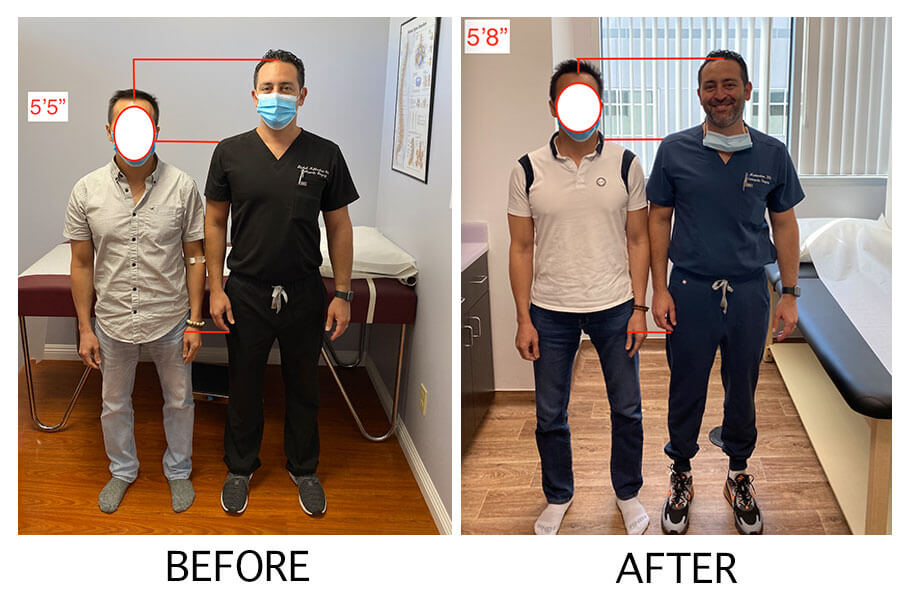
تكلفة عملية زيادة الطول في تركيا
في الحقيقة تختلف تكلفة عملية تطويل العظام في تركيا حسب التقنية والجهاز المستخدم في العملية حيث إن تقنية اليزاروف هي التقنية الأقدم والأقل تكلفة بينما تقنية سترايد الحديثة هي الأكثر تكلفة، حيث تبدأ تكلفة عملية اليزاروف لتطويل القامة في تركيا من 17 ألف دولار أمريكي، بينما تبدأ تكلفة عملية المسمار النخاعي (تقنية برسايس) لتطويل العظام في تركيا من سعر 35 ألف دولار، علماً أن سعر عملية زيادة الطول بالمثبت الداخلي يختلف بحسب نوع المادة المستخدمة.
في الختام، تعد عملية تطويل القامة خيار ممتاز لأصحاب قصار القامة، من أجل تحسين الطول وزيادة الثقة لديهم، وتأكد ان تركيا هي خيارك الأول والأفضل لإجراء عملية تطويل العظام ليس فقط لقلة التكلفة نسبياً بل لوجود عدة مراكز جراحية متطورة وكادر طبي متميز أجرى هذا النوع من العمليات الجراحية بمعدل نجاح مرتفع.
المصادر:
- Limb Lengthening Surgery. (n.d.). Boston Children’s Hospital. Retrieved July 29, 2025
- Limb Lengthening: The Process. (n.d.). International Center for Limb Lengthening. Retrieved July 29, 2025

